LAMB AT DUSK
July 25, 2014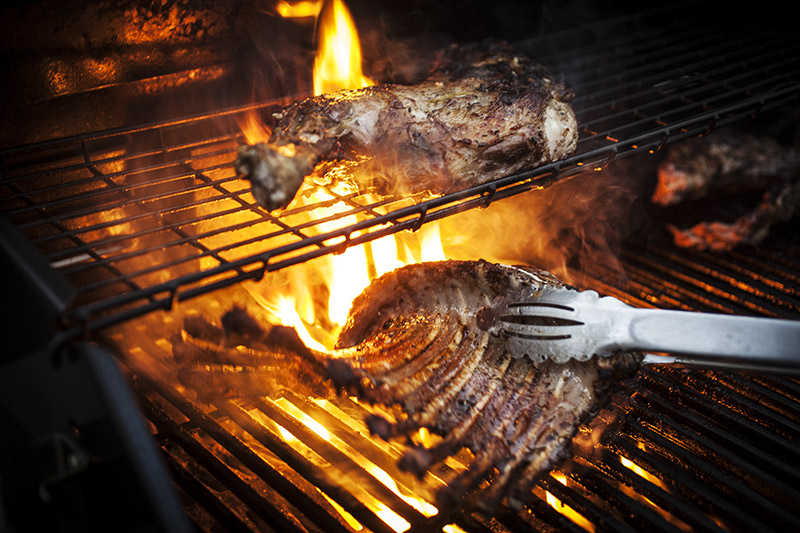
I often walk into the butcher and see a beautiful forequarter rack of lamb staring back at me, taunting me! Not only because I love lamb but when buying a piece of lamb that hasn’t been butchered, the price is substantially lower. The forequarter contains the front leg and the ribs (chops), and both cuts are excellent choices for the barbie. The meat from the leg can either be separated from the bone and rolled into a roast or can be cooked on the bone as is. The ribs can be further butchered into chops or can be grilled to perfection as a full rack.
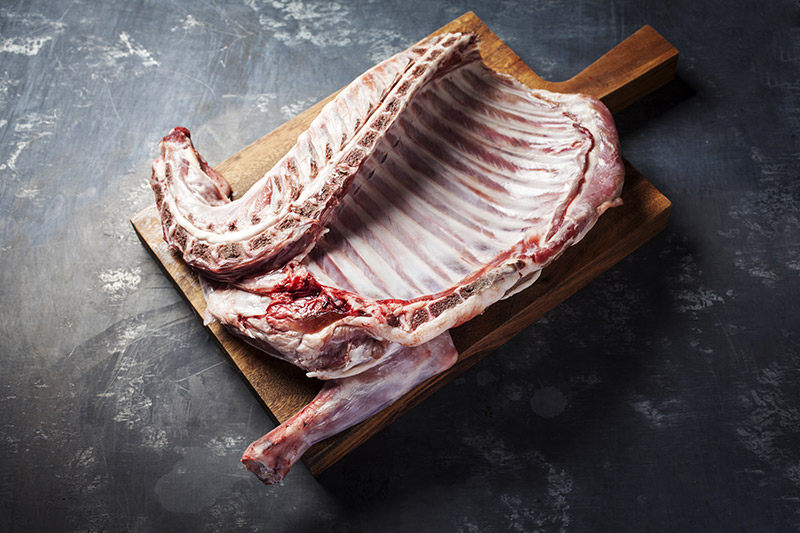
Imaged here is a forequarter rack of lamb with the entire rib rack. A square cut shoulder is more readily available but only has about 4 ribs attached. It’s up to you how you’d like to buy it from your butcher however, be sure to specify a forequarter rack if you’d like to prepare it as I am here.
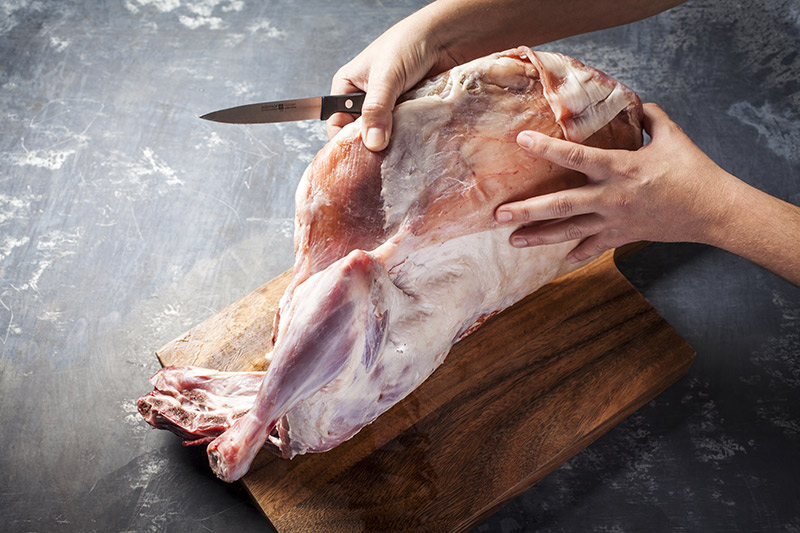
We’ll want to start by separating the leg from the shoulder.
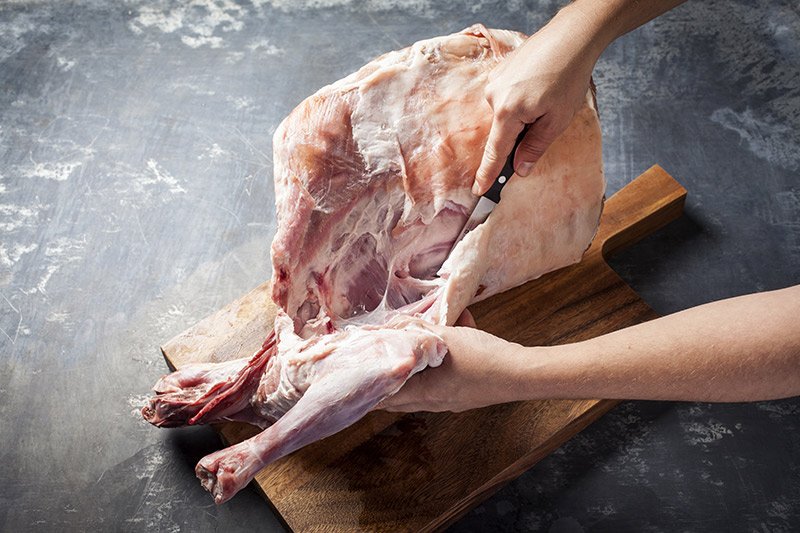
Begin by identifying the leg from the ribs and cut downwards along the ribs.
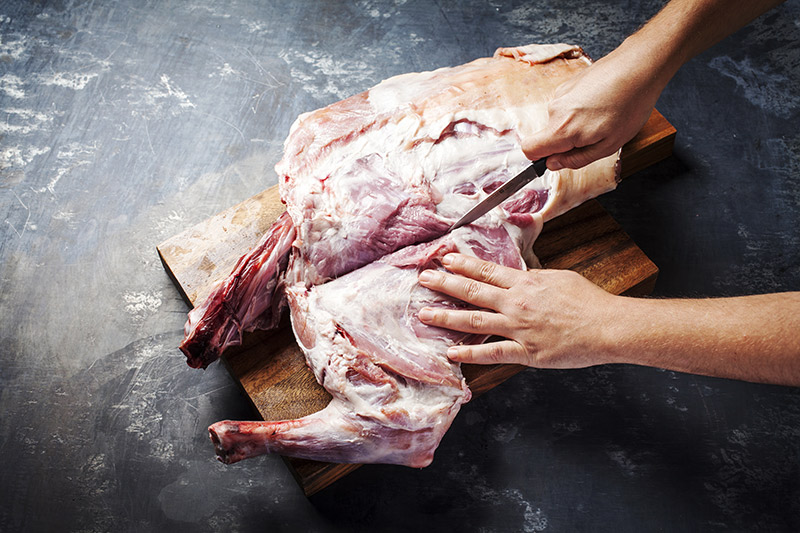
Staying as close to the ribs as possible, slice the leg away from the neck and rib set carefully. At a certain point, you’ll be able to lay both the leg and ribs down to make the job easier.
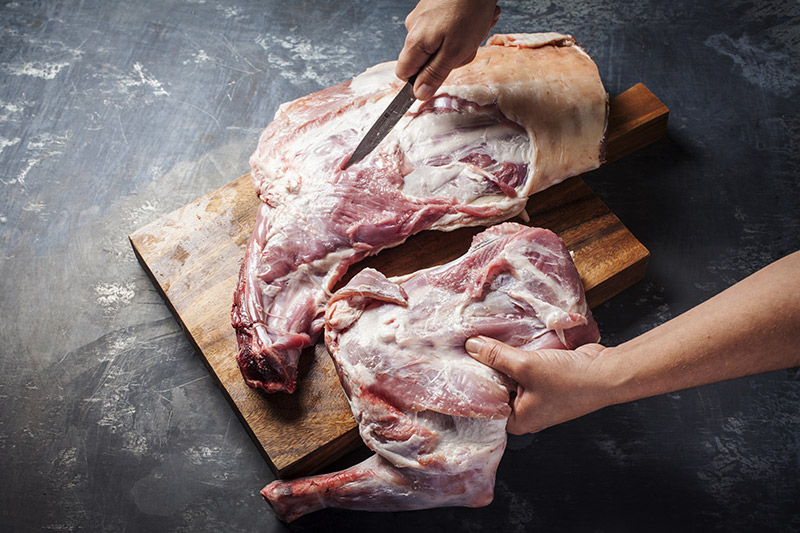
Remove the leg completely from the neck and rib set and place to one side.
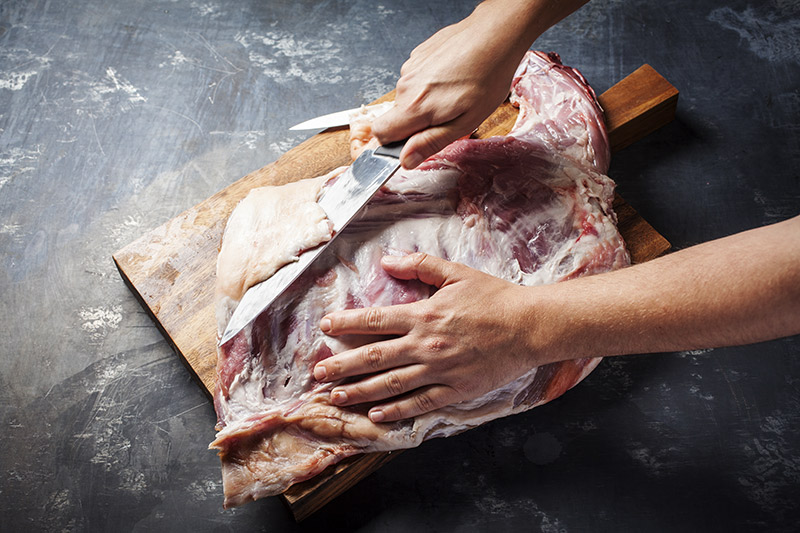
Once the leg is fully removed, turn the rack over and remove the skin from the flesh. Discard the skin or reserve for making a Scotch broth later. (Anything that will be removed and that is not suitable for the BBQ can be used for a Scotch broth.)
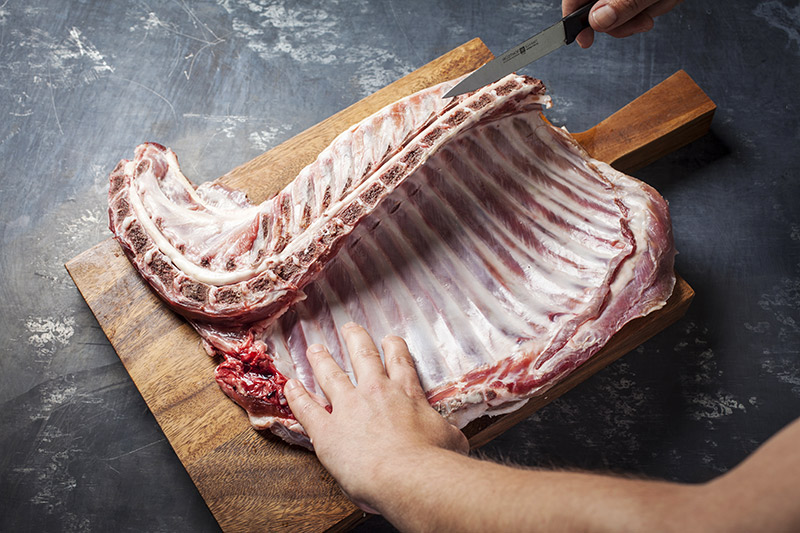
Turn the ribs back over and locate the first rib under the neck as demonstrated above by my little finger. This is the rib that the following cut should follow.
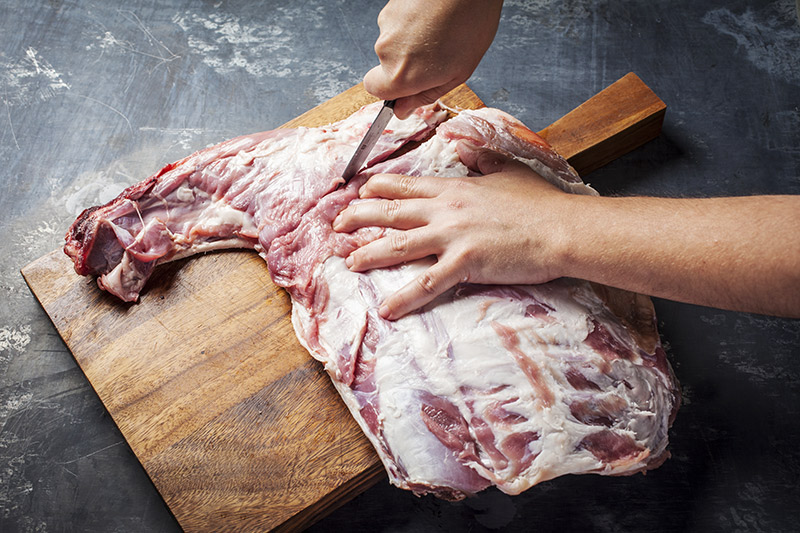
After having identified the first rib attached to the neck, turn the rack back over once again and starting at the neck, carefully slice downwards following the line of the neck and the outside of the first rib closest to the neck. To separate the two, you will have to cut through the neck’s cartilage.
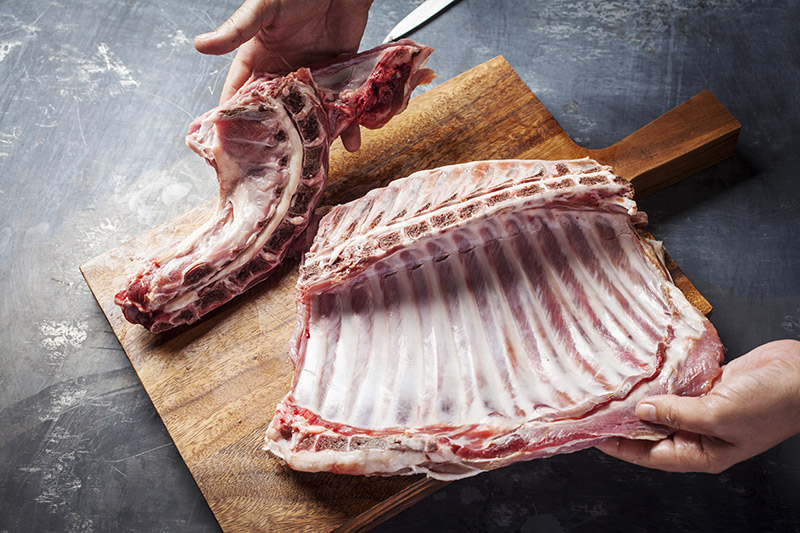
Remove the neck from the ribs. Don’t forget the Scotch broth!
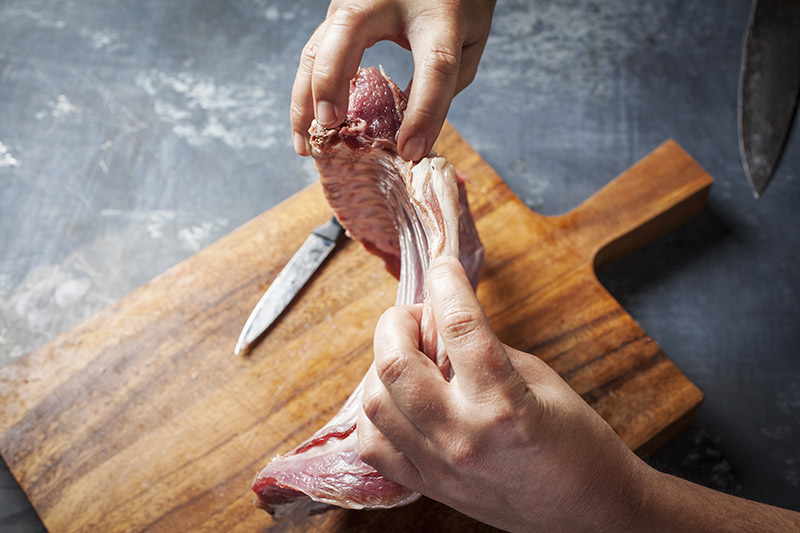
Remove any excess fat from the ribs. Identify the eye muscle (the muscle in-between my index and middle fingers at the top of the image) in the rack and decide now wether to leave it whole or to separate them into chops. If the eye muscle is small, it is preferable to leave the rack whole. In the event that you are leaving it whole, you’ll want to french cut it. Identify the the point of the ribs corresponding to about their halfway mark, as demonstrated by my index finger in the centre of the image. Don’t worry, it becomes clear as you see the pictures below!
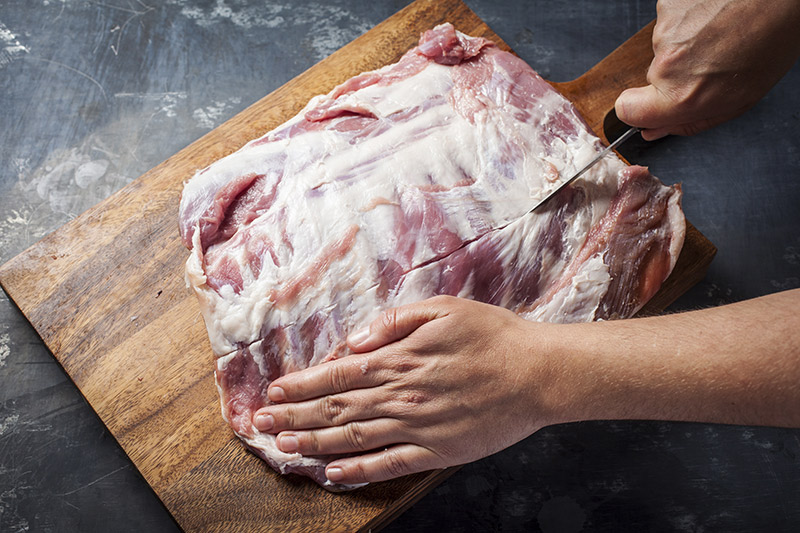
Slice across the meat covering the bones at the centre point of the rack.
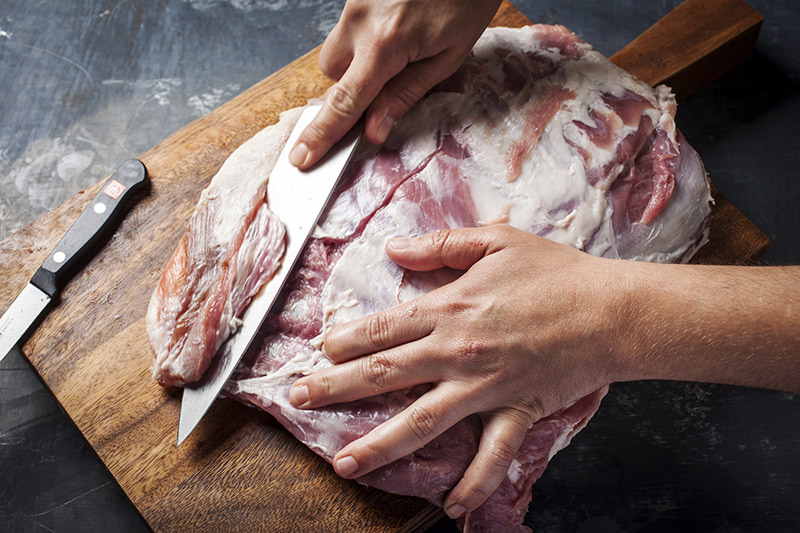
With the widest part of the rack away from you, remove the meat from the top portion of the ribs to expose the superior cartilage (the part that does not have the eye muscle in it).
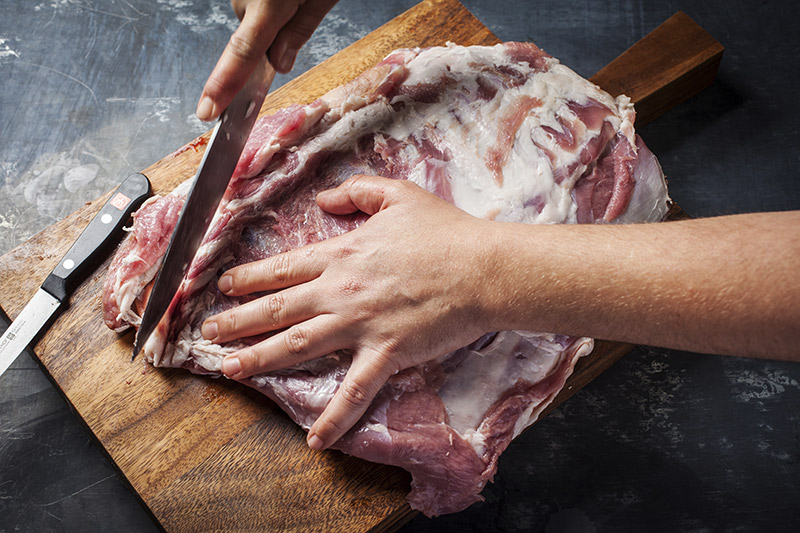
Cut along the top of the rack to separate the ribs from the cartilage.
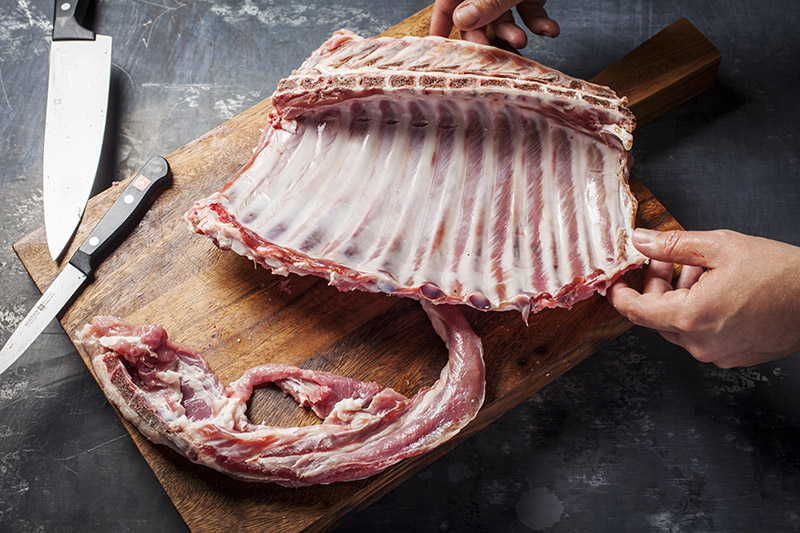
The cartilage can be reserved for a Scotch broth.
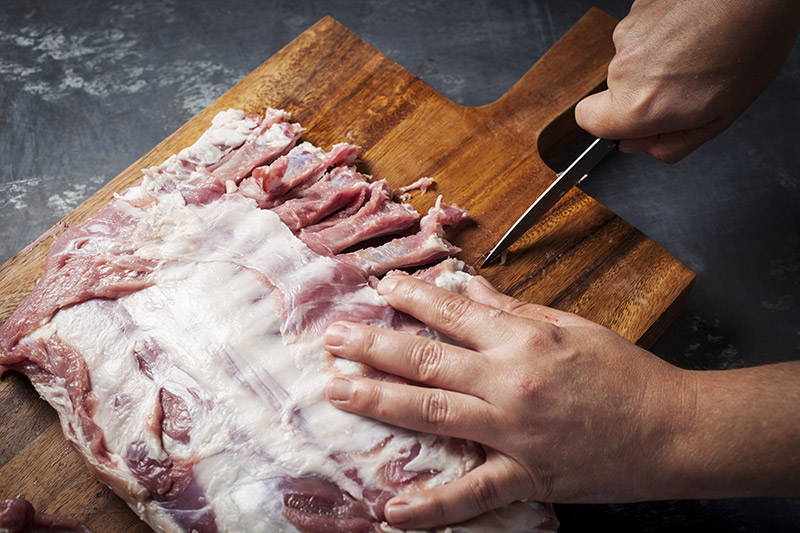
Remove the meat in-between the ribs, this is called intercostal meat and this technique is known as frenching.
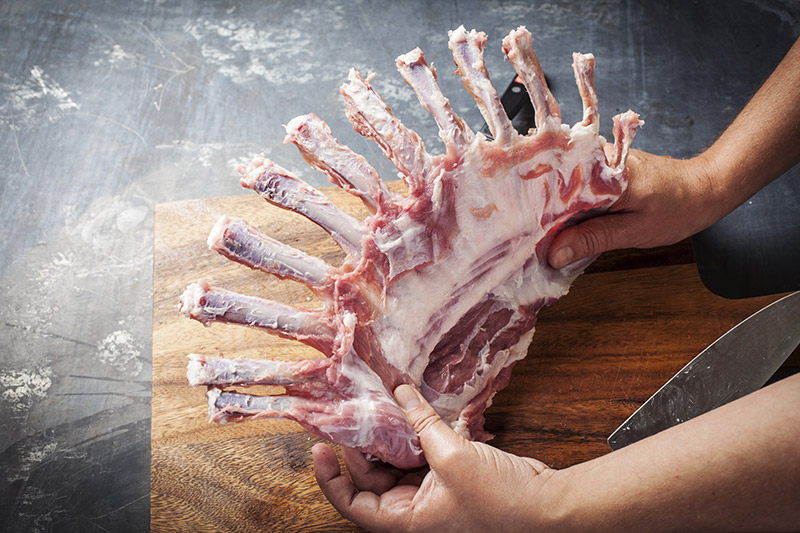
Once the rack has been frenched, set to one side.
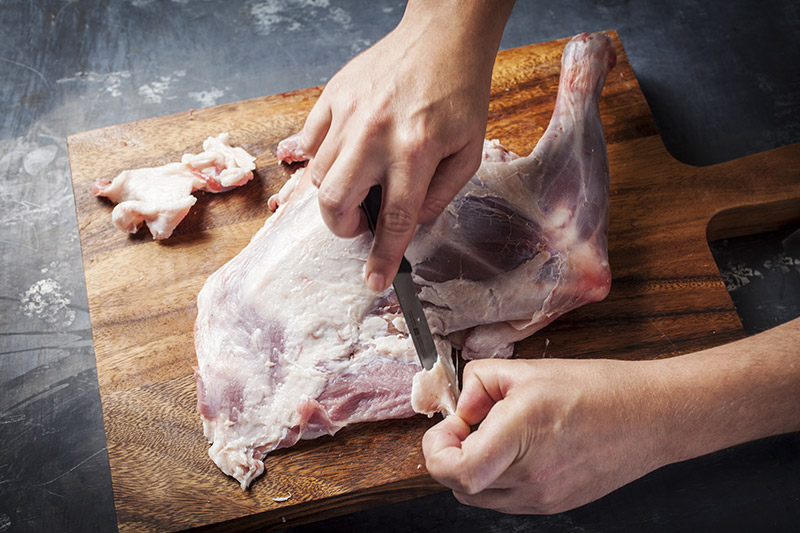
Bring the leg back to the cutting board and trim clean of the skin.
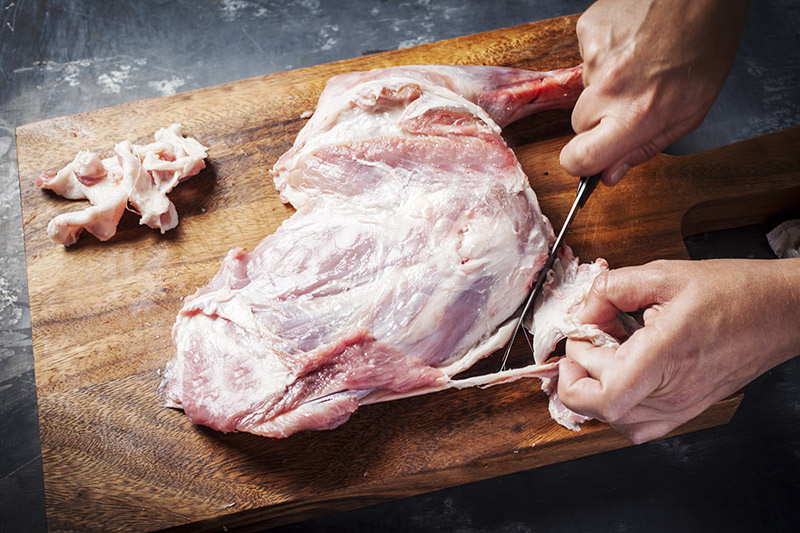
Turn the leg over and trim of excess fat. The skin and fat can be discarded or reserved for Scotch broth at a later time.
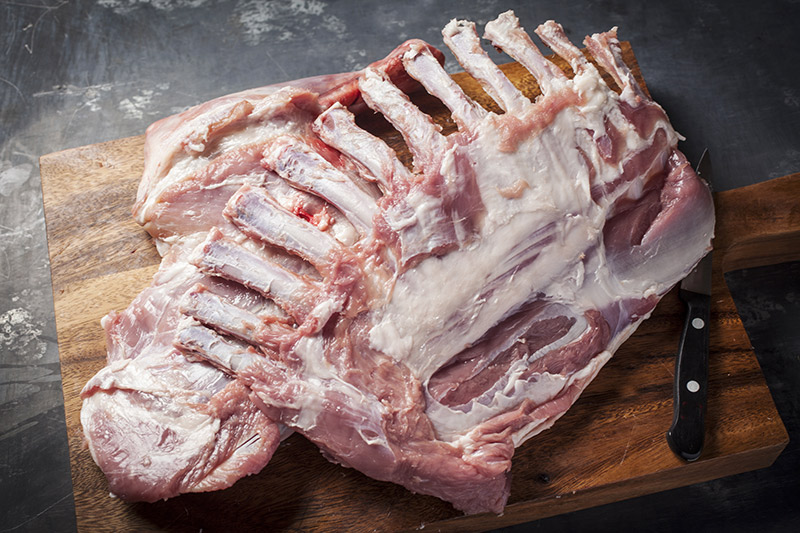
The leg and rack are now ready for marinating and placing on the barbie.
Butchering lamb not only has the benefit of saving you money at the register but has the added benefit of freshness. Because you are butchering it yourself you are exposing it to very little air prior to it being marinated and placed on the grill. It’s also really simple to do! If you’re not inclined to butcher your own lamb, rest assured that your butcher will be more than willing to do it for you.
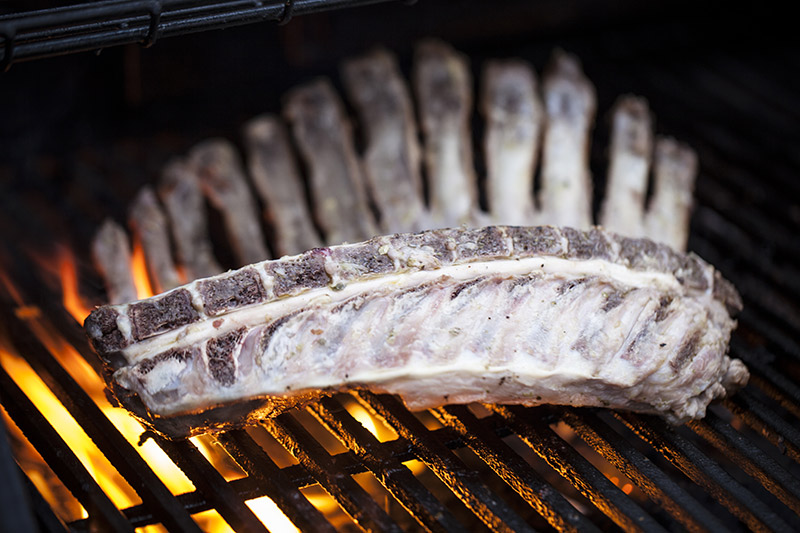
When grilling the rack, begin with the flesh side down and turn once the meat on that side is cooked. About 7 minutes over medium-high heat. Lamb is naturally fatty and flare-ups are normal.
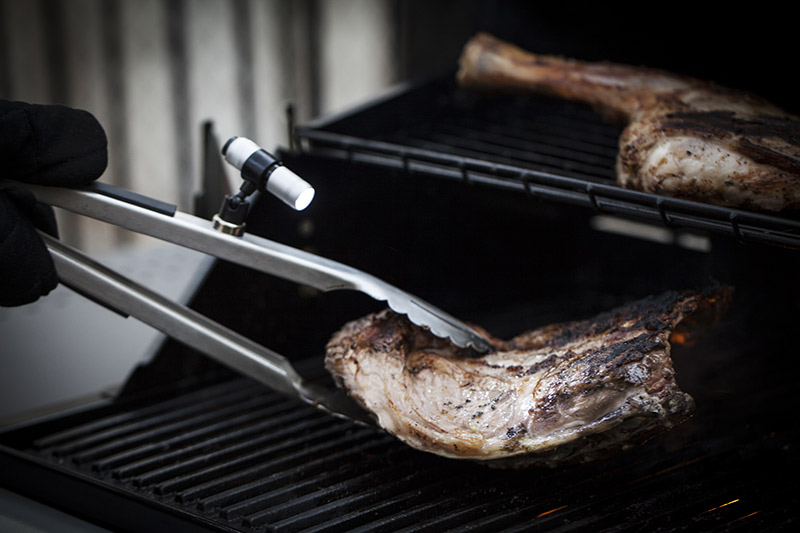
When barbecuing at dusk or at night and a light is not installed near the grill, the BBQXL magnetic tool light can help. It clings to any metal tools with flat surfaces and are of great help when cooking in the dark. Click on the image for more information.
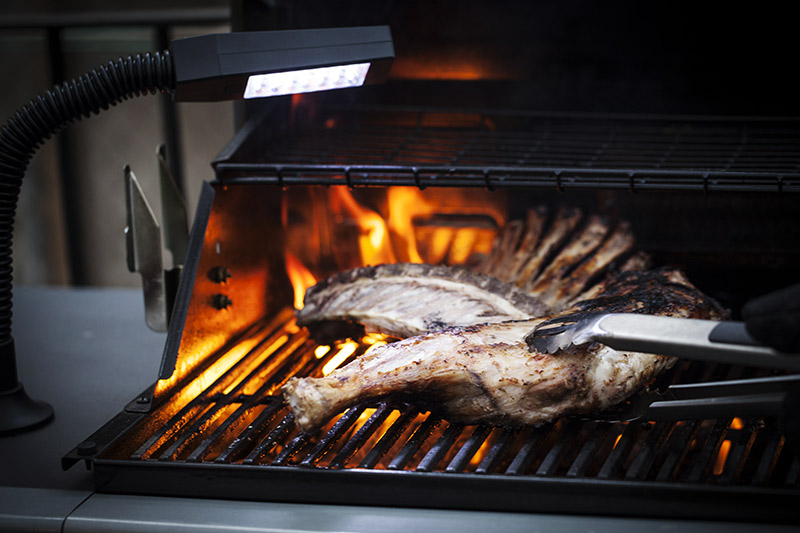
Another great light for the barbie is the BBQXL LED light that clings by magnet to any metallic surface on your barbecue. Click on the image for more info.
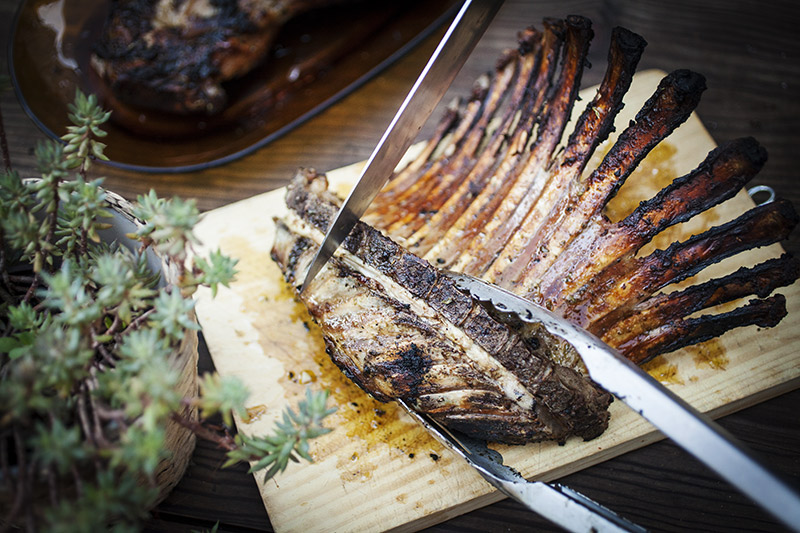
The full cooking time for a half kilo rack is about 7 minutes per side over medium high heat depending on how you like your lamb.
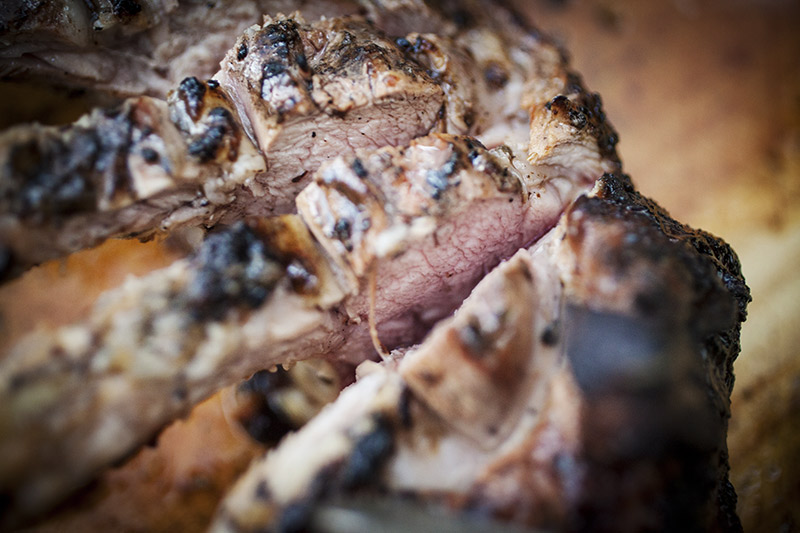
Lamb is a meat that you can easily enjoy rare, medium as seen in the above close-up of the rack, or well-done.
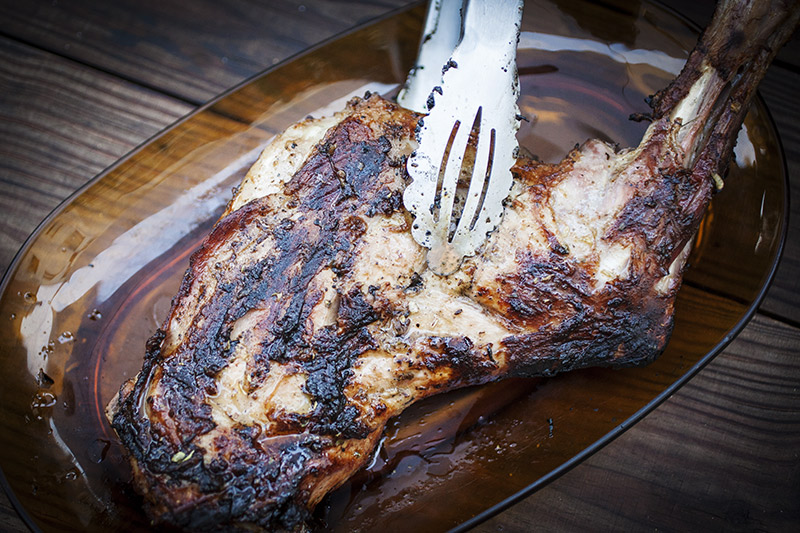
A good rule of mine is that the leg meat tends to be a tougher cut and I always cook the legs more towards the well-done side. Despite the fact that well-done lamb is no longer pink in colour, it still reserves a lot of juices from the natural fattiness of the meat. Impossible to resist with a side of new potatoes and fresh mint sauce.
